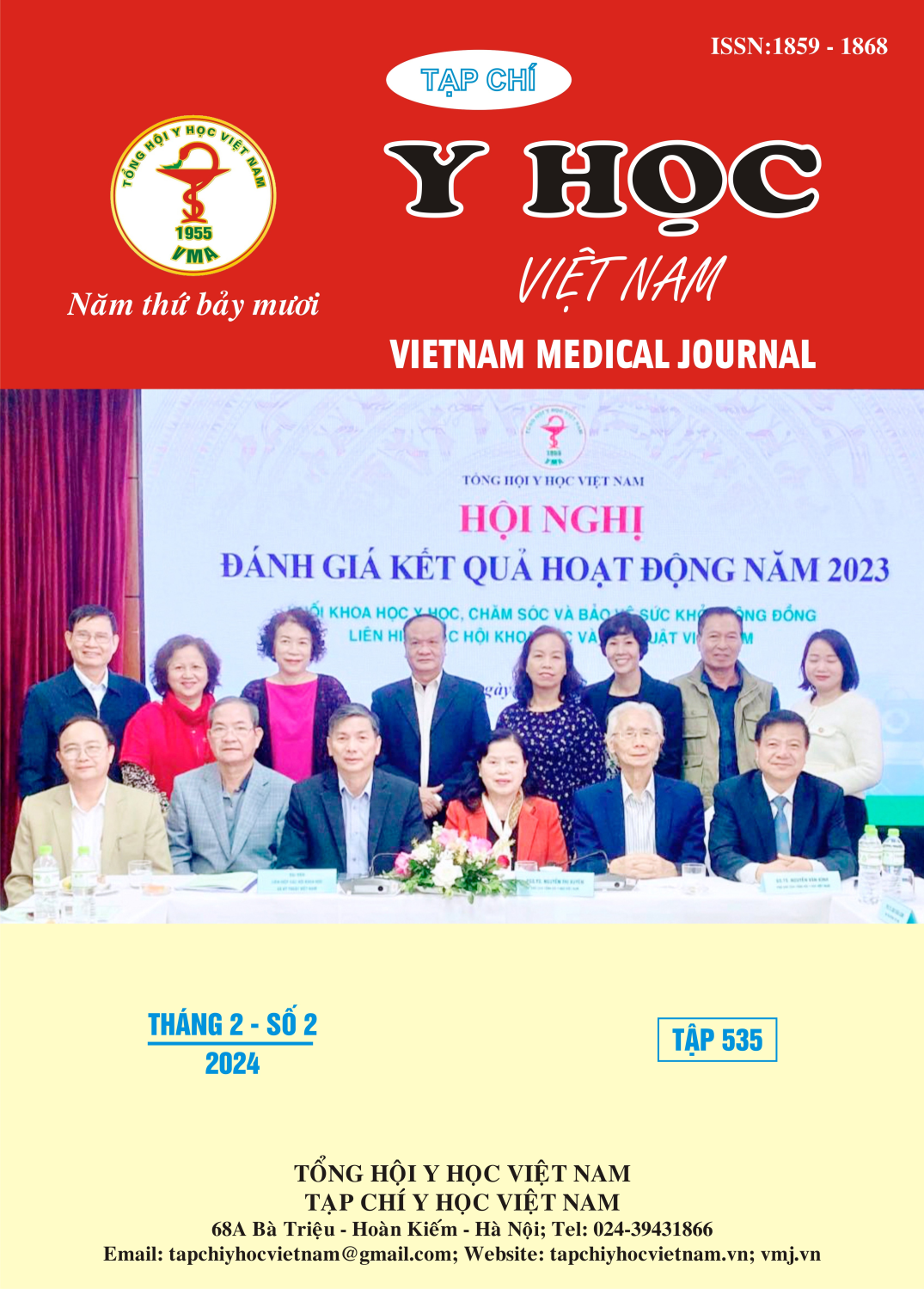VALUE OF DUAL-ENERGY COMPUTED TOMOGRAPHY IN DIAGNOSING NON-SMALL CELL LUNG CANCER
Main Article Content
Abstract
Objective: To assess the efficacy of spectral computed tomography (CT) imaging parameters for differentiating Research to evaluate the value of the indicators of two-energy level CT scan in diagnosing types of adenocarcinoma and squamous carcinoma in non-small cell lung cancer. Methods: We conducted a cross-sectional descriptive study in 42 patients with solitary pulmonary nodules proved by pathology underwent double-phase enhanced CT scan at the Diagnostic Imaging Center of K Hospital, Hanoi from March 2022 to February 2023. The slope rate was calculated from the spectral curve. The independent T-test were performed to compare quantitative parameters (IC, nIC, HU slope rate) of pulmonary nodules between squamous cell carcinoma from adenocarcinoma. Results: The study included 23 non-small cell lung cancer patients (20 men, 3 women). The average age was 57,0 ± 9,9 years. The proportion of patients smoking was 60,9%. Overall, the naIC, vIC, nvIC parameters in adenocarcinoma lesions were 0,25 ± 0,14, 1,60 ± 0,56mg/ml and 0,42 ± 0,14, respectively, were all higher than in squamous carcinoma (were 0,11 ± 0,05, 1,01 ± 0,30 mg/ml and 0,27 ± 0,06, respectively) (all p values <0.05). However, aIC and HU slope rate (lHU) parameters did not have a statistically significant difference between the 2 lesion groups. Conclusion: The parameters naIC, vIC and nvIC derived from enhanced DECT were useful to discriminate squamous cell carcinoma from adenocarcinoma. However, the aIC and lHU parameter has little role in distinguishing these two different pathological types of non-small cell lung cancer
Article Details
Keywords
DECT, iodine concentration, lung squamous carcinoma, adenocarcinoma.
References
2. Herbst RS, Morgensztern D, Boshoff C. The biology and management of non-small cell lung cancer. Nature. 2018;553(7689):446-454. doi:10.1038/nature25183
3. Heist RS, Sequist LV, Engelman JA. Genetic Changes in Squamous Cell Lung Cancer: A Review. J Thorac Oncol. 2012;7(5):924-933. doi:10.1097/JTO.0b013e31824cc334
4. Tacelli N, Santangelo T, Scherpereel A, et al. Perfusion CT allows prediction of therapy response in non-small cell lung cancer treated with conventional and anti-angiogenic chemotherapy. Eur Radiol. 2013;23(8):2127-2136. doi:10.1007/s00330-013-2821-2
5. Lê Hoàn. Nghiên cứu đặc điểm lâm sàng, cận lâm sàng và bước đầu áp dụng phân loại TNM 2009 cho ung thư phổi tại khoa Hô hấp- Bệnh viện Bạch Mai. Trường Đại Học Hà Nội Hà Nội. Published online 2010.
6. Park H, Lee YJ, Joung MK, et al. Trends of clinical characteristics of lung cancer diagnosed in Chungnam national university hospital since 2000: P1-044. J Thorac Oncol - J THORAC ONCOL. 2007; 2. doi:10. 1097/ 01.JTO. 0000283658.82746.2a
7. Zhang Z, Zou H, Yuan A, et al. A Single Enhanced Dual-Energy CT Scan May Distinguish Lung Squamous Cell Carcinoma From Adenocarcinoma During the Venous phase. Acad Radiol. 2020;27(5):624-629. doi:10.1016/ j.acra.2019.07.018
8. Fehrenbach U, Kahn J, Böning G, et al. Spectral CT and its specific values in the staging of patients with non-small cell lung cancer: technical possibilities and clinical impact. Clin Radiol. 2019;74(6):456-466. doi:10.1016/ j.crad.2019.02.010
9. Wang G, Zhang C, Li M, Deng K, Li W. Preliminary Application of High-Definition Computed Tomographic Gemstone Spectral Imaging in Lung Cancer: J Comput Assist Tomogr. 2014; 38(1): 77-81. doi: 10.1097/RCT. 0b013e3182a21633
10. Li X, Meng X, Ye Z. Iodine quantification to characterize primary lesions, metastatic and non-metastatic lymph nodes in lung cancers by dual energy computed tomography: An initial experience. Eur J Radiol. 2016;85(6):1219-1223. doi:10.1016/ j.ejrad.2016.03.030


